
All categories
Featured selections
Trade Assurance
Buyer Central
Help Center
Get the app
Become a supplier

(34769 products available)
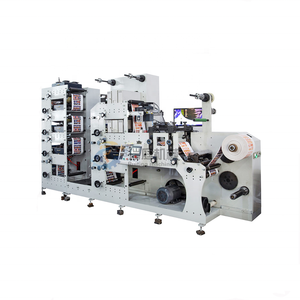
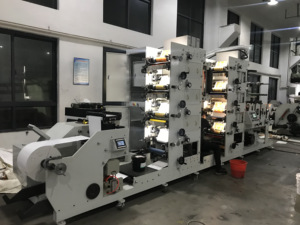
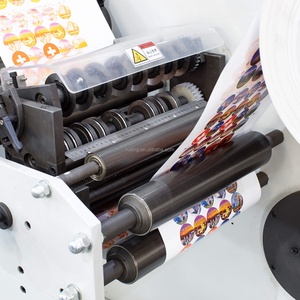
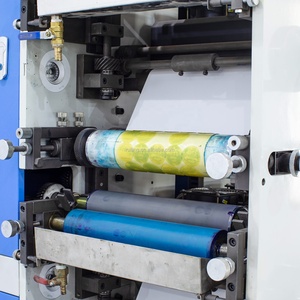









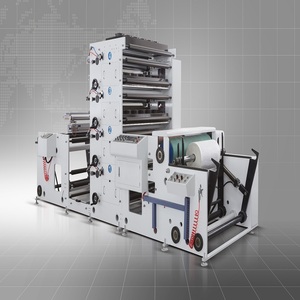

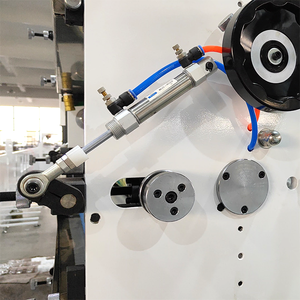
















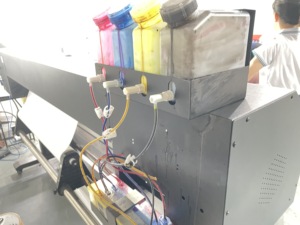








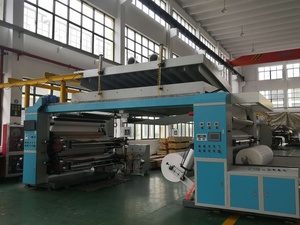
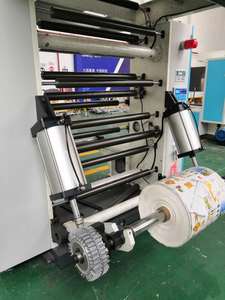

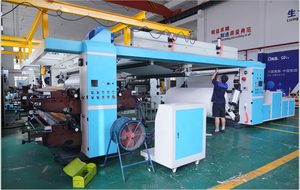

In the world of commercial equipment, flexographic printer machinery stands out as a vital component in the printing industry. Known for its efficiency and versatility, it is a type of printing machine that uses a flexible relief plate to transfer ink onto various substrates. This method is especially popular for its ability to print on a wide variety of materials, including plastic, metallic films, cellophane, and paper. The flexibility of flexographic printer machinery makes it a preferred choice for large-scale printing tasks, particularly in the packaging sector where speed and quality are paramount. The technology behind these machines has evolved significantly, offering enhanced features that cater to the demands of modern-day printing.
There are several types of flexographic printer machinery available, each engineered to meet specific printing needs. The most common types include central impression cylinder presses, inline presses, and stack presses. Central impression cylinder presses are favored for their ability to maintain consistent tension, making them ideal for printing on thin substrates. Inline presses, on the other hand, are designed for flexibility, allowing multiple processes like printing, laminating, and die-cutting to occur in a single pass. Stack presses are known for their compact design and are often used for printing on both sides of a substrate simultaneously. Each type of flexographic printer machinery offers unique advantages, making it crucial to choose the right one based on the specific requirements of the printing task.
The primary function of flexographic printer machinery is to efficiently transfer ink onto various substrates with precision. One of the standout features is its high-speed operation, which allows for rapid production without compromising on print quality. The use of quick-drying inks and flexible plates enables flexographic printer machinery to produce sharp, vibrant images with minimal downtime between runs. Additionally, these printers are equipped with advanced control systems that ensure precise ink distribution and registration, essential for maintaining print consistency. The modular design of modern flexographic printer machinery facilitates easy integration of additional units, such as laminators or varnish applicators, enhancing their functionality and versatility in diverse printing applications.
The construction of flexographic printer machinery involves a combination of durable materials and sophisticated components. The printing plates are typically made from photopolymer or rubber, materials known for their flexibility and resilience. Anilox rollers, which are crucial for ink distribution, are crafted from high-quality ceramic or chrome-plated metal to ensure durability and precision. The substrates used for printing can range from paper and cardboard to films and foils, showcasing the adaptability of flexographic printer machinery . The choice of materials impacts the overall performance of the printer, as well as the quality of the final print. As technology advances, the materials used in these printers continue to evolve, with a focus on enhancing efficiency and reducing environmental impact.
Operating flexographic printer machinery effectively requires a thorough understanding of its components and functions. It is important to ensure that the printing plates are properly mounted and the anilox rollers are clean and free from debris to maintain print quality. Adjusting the tension of the substrate is crucial to prevent misalignment and ensure even ink coverage. Regular maintenance, such as cleaning the ink delivery system and checking for wear and tear on components, is essential for optimal performance. Training operators on the specific settings and controls of flexographic printer machinery can significantly enhance productivity and reduce the likelihood of errors. By following these guidelines, operators can maximize the efficiency and lifespan of their printing machines, ensuring consistent, high-quality outputs.
When selecting flexographic printer machinery , it is essential to consider the specific requirements of your printing tasks. One of the primary factors to evaluate is the type of substrate you will be printing on. Different printers are better suited for materials like plastic, paper, or metallic films. It's crucial to match the printer's capabilities with the materials you plan to use to ensure optimal performance. Additionally, consider the size and format of the print jobs, as some printers are designed for narrow-web applications while others are better for wide-web tasks. Understanding these parameters will help in choosing a printer that meets your production needs efficiently.
Another important consideration is the production speed and print quality offered by flexographic printer machinery . High-speed printers are beneficial for large volume tasks, but it's vital to ensure that speed does not compromise print quality. Look for printers equipped with advanced control systems that maintain high precision and consistency at greater speeds. The ability to quickly switch between different print jobs without significant downtime is also a valuable feature, especially in fast-paced production environments. Assessing these aspects will ensure that the printer you select can handle your workload effectively and maintain the quality standards your operations demand.
Maintenance and ease of operation are also key factors when choosing flexographic printer machinery . Opt for models that offer simple maintenance procedures and have readily available replacement parts. This can significantly reduce downtime and maintenance costs. User-friendly interfaces and automated features can simplify the operation, making it easier for operators to manage complex tasks and minimize errors. Investing in a printer that offers training and support services can further enhance operational efficiency and ensure that your team is well-equipped to maximize the printer's capabilities.
Flexographic printers offer several advantages, including the ability to print on a wide range of substrates like plastic, paper, and metallic films. They are known for their high-speed production capabilities and efficient ink usage, making them cost-effective for large volume tasks. Additionally, flexographic printer machinery can produce vibrant and high-quality prints with quick-drying inks, reducing production time and increasing throughput.
To ensure consistent quality with flexographic printer machinery , it's important to maintain and clean the anilox rollers regularly to ensure even ink distribution. Properly mounting the printing plates and adjusting substrate tension can prevent misalignment and ensure even coverage. Training operators on the specific settings and controls of the printer can also help maintain print consistency.
flexographic printer machinery are compatible with various types of inks, including water-based, solvent-based, and UV-curable inks. The choice of ink depends on the substrate and the desired print quality. Water-based inks are environmentally friendly and suitable for porous materials, while solvent-based inks offer excellent adhesion and durability for non-porous substrates. UV-curable inks provide fast curing times and vibrant colors.
While flexographic printer machinery are traditionally used for high-volume printing, advancements in technology have made them suitable for short-run tasks as well. Quick setup times and the ability to easily switch between print jobs make them versatile for various production scales. However, it's important to assess the cost-effectiveness based on the specific job requirements.
Anilox rollers in flexographic printer machinery play a crucial role in ink distribution. They are designed with a precise pattern of cells that hold and transfer a consistent amount of ink to the printing plate. The quality and cell count of the anilox roller can significantly impact print quality, making it essential to choose the right roller for the specific printing task and regularly maintain it for optimal performance.